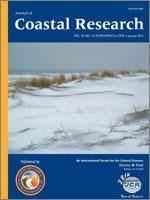Seagrass restoration has often not been successful due to poor site planning, physical disturbance, transplant timing incompatibility, and physical and biological disturbances. As such, these factors are important for successfully restoring seagrasses, and global success has greatly increased. We conducted restorations in the mid-Atlantic region of the United States to reestablish this valuable habitat. Our restoration efforts in New Jersey involved transplants of both Zostera marina (eelgrass) and Ruppia maritima (widgeon grass). We found that Z. marina site success and transplant survival increased over the scope of this 4-year investigation (66%–100% and 34%–43%, respectively). However, R. maritima success was heavily dependant upon the year planted; with limited success in 2002 (12%) and high success during 2003 (80%), most likely related to the brown-tide bloom and nonbloom associated with these planting years. For both species restored, ecosystem function was becoming established by the end of the study, demonstrated by their ability to trap and bind fine particulate matter. We provide evidence from this study that seagrass restoration is a viable option for coastal managers and that once established, seagrasses can recover and expand.
How to translate text using browser tools
1 January 2012
Restoration of Seagrass Habitat in New Jersey, United States
Paul A. X. Bologna,
Michael S. Sinnema
ACCESS THE FULL ARTICLE

Journal of Coastal Research
Vol. 28 • No. 1A
January 2012
Vol. 28 • No. 1A
January 2012
eelgrass
Ruppia
widgeon grass
Zostera




